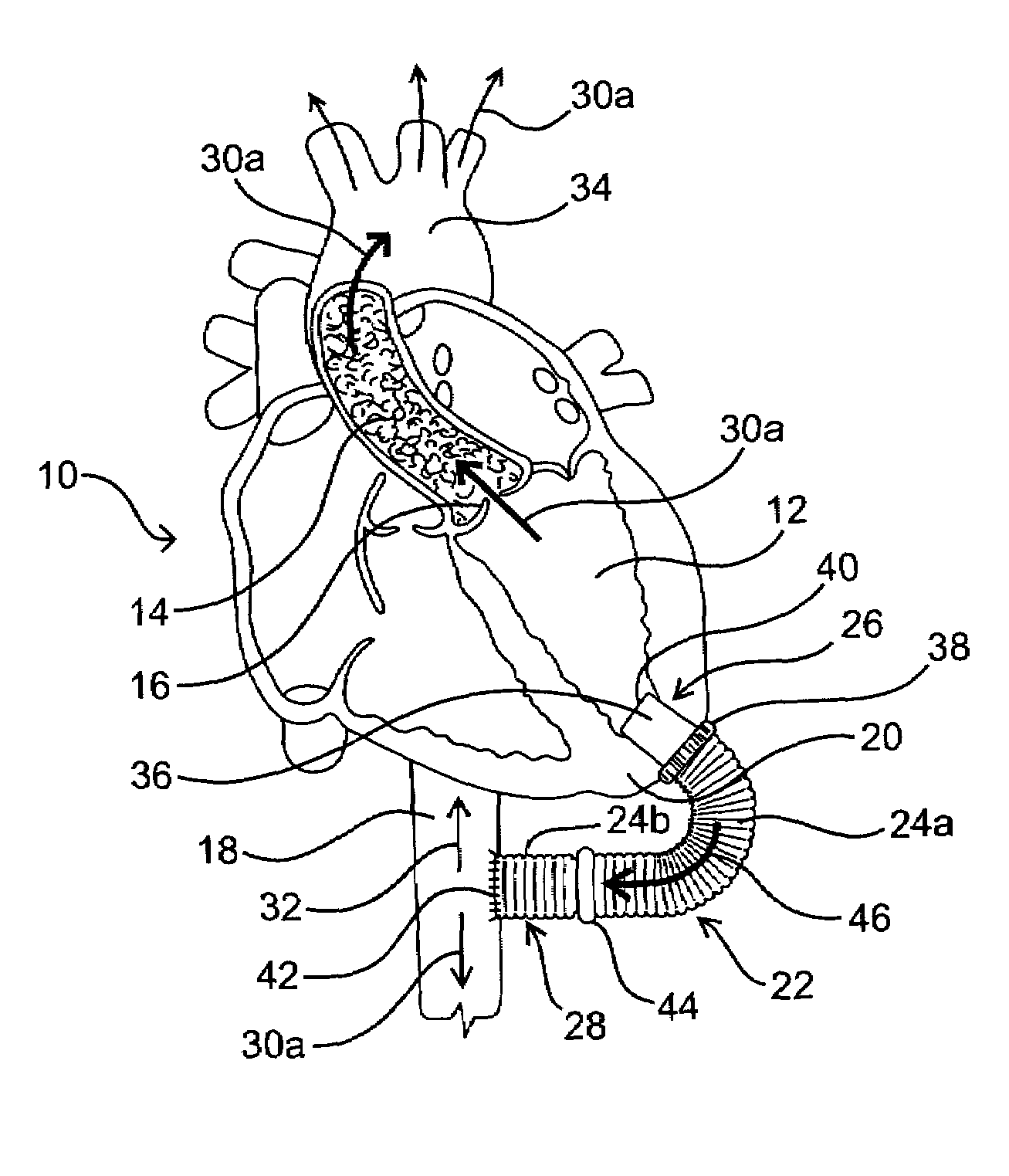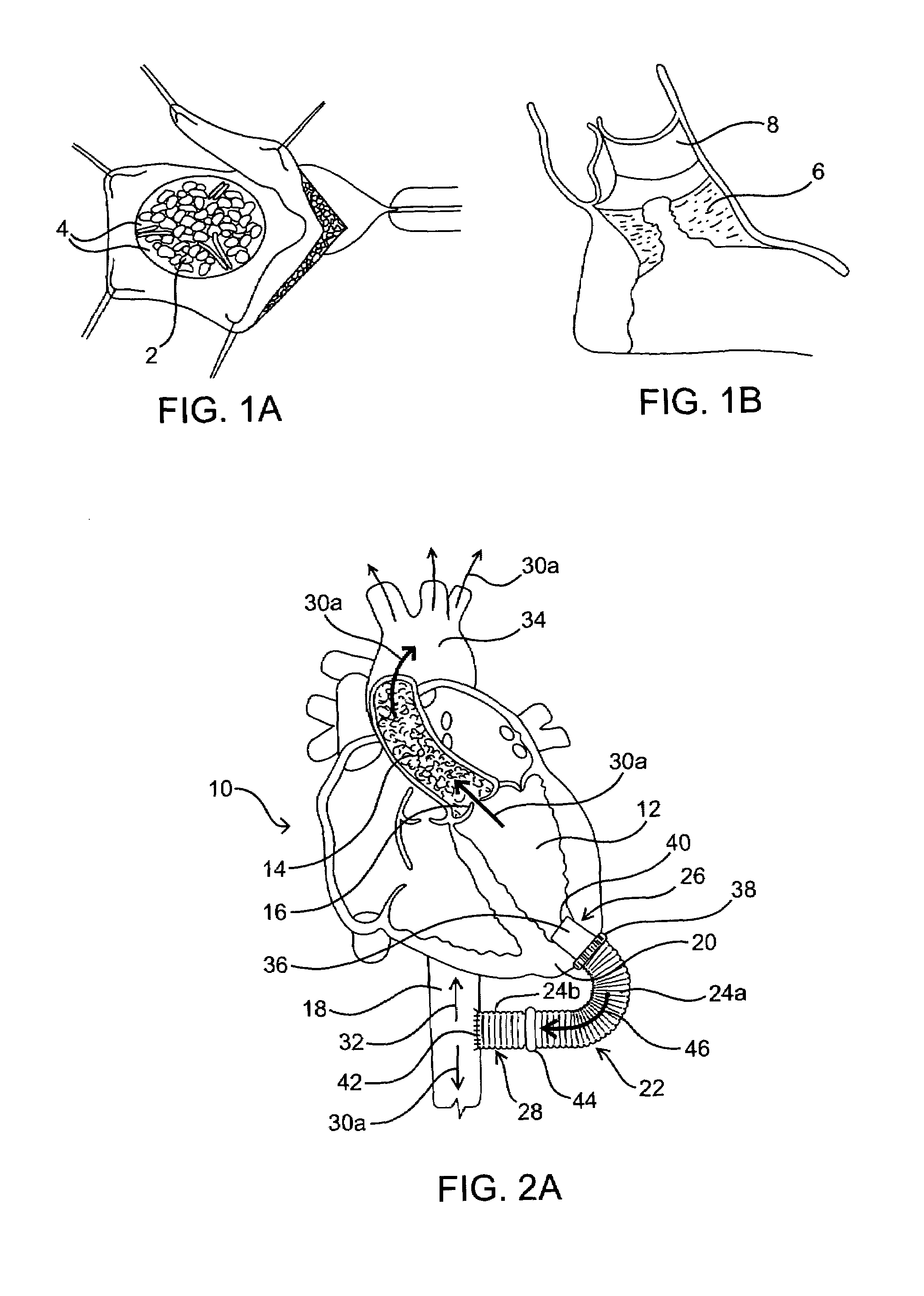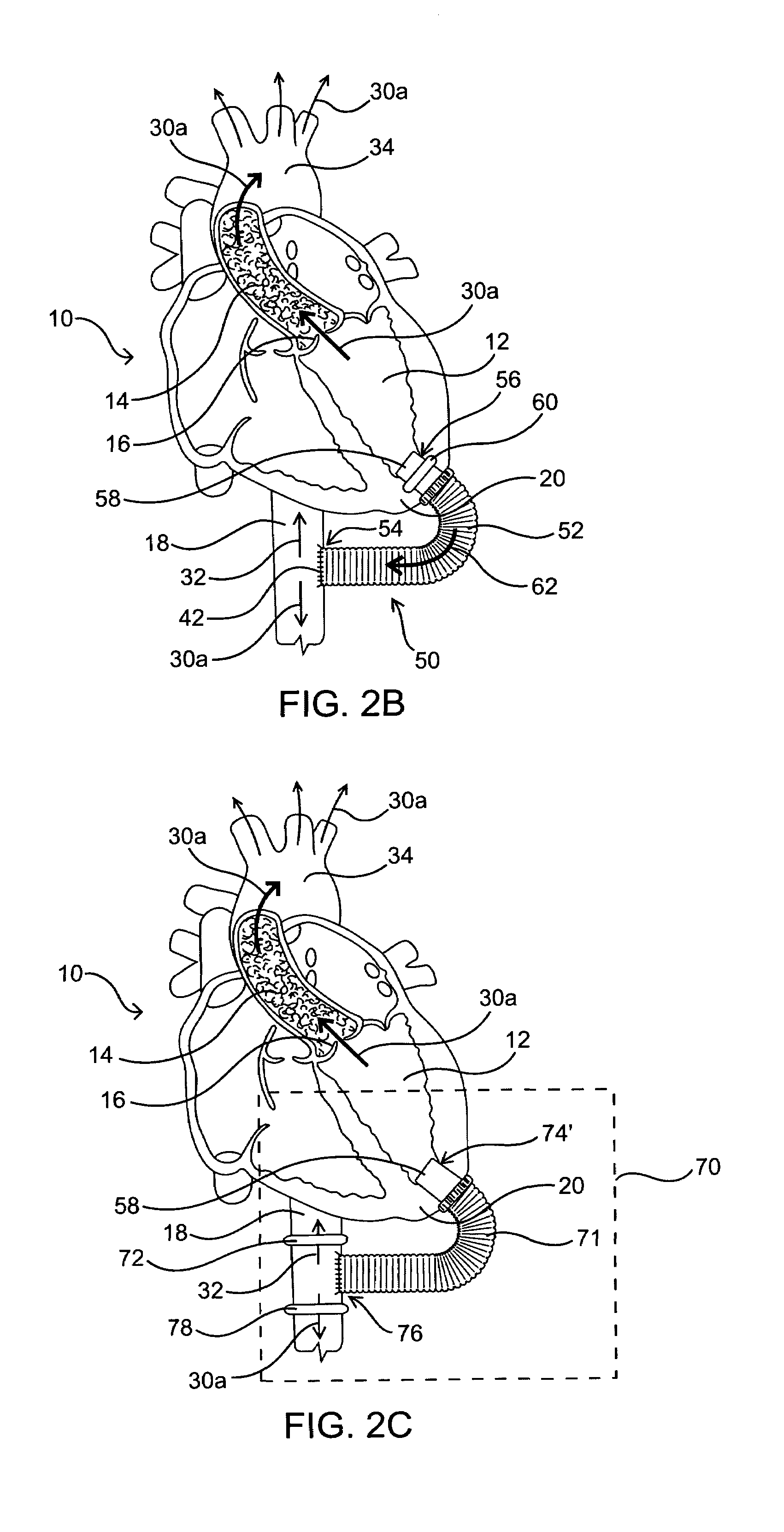Methods and devices for improving cardiac output
a technology of cardiac output and cardiac valve, applied in the field of improving cardiac output, can solve the problems of reducing the ability of the heart to output oxygenated blood from the left side of the heart, reducing the output, and reducing the cardiac output of the hear
- Summary
- Abstract
- Description
- Claims
- Application Information
AI Technical Summary
Benefits of technology
Problems solved by technology
Method used
Image
Examples
Embodiment Construction
[0024]As mentioned above, the present invention includes devices, systems, methods and kits for establishing one or more blood flow conduits from the left ventricle of the heart to the aorta to compensate for a dysfunctional left ventricle.
[0025]Before the present invention is described in detail, it is to be understood that this invention is not limited to particular embodiments and applications described, as such may vary within the scope of the scope of the appended claims. For example, the following description of the invention is primarily described in the context of establishing a fluid communication connection between the left ventricle of the heart and the descending aorta; however, such description, with certain obvious modifications to the invention, is also intended to apply to such connections between the left ventricle and another natural or native structure, e.g., the ascending aorta; between another chamber of the heart to another native blood conduit, e.g., from the ...
PUM
 Login to View More
Login to View More Abstract
Description
Claims
Application Information
 Login to View More
Login to View More - R&D
- Intellectual Property
- Life Sciences
- Materials
- Tech Scout
- Unparalleled Data Quality
- Higher Quality Content
- 60% Fewer Hallucinations
Browse by: Latest US Patents, China's latest patents, Technical Efficacy Thesaurus, Application Domain, Technology Topic, Popular Technical Reports.
© 2025 PatSnap. All rights reserved.Legal|Privacy policy|Modern Slavery Act Transparency Statement|Sitemap|About US| Contact US: help@patsnap.com



